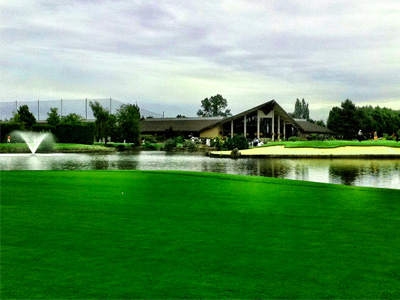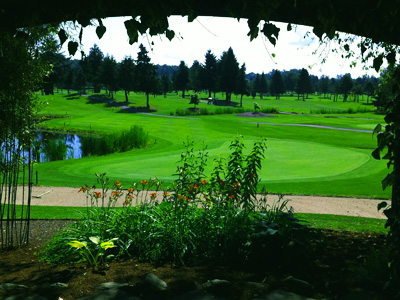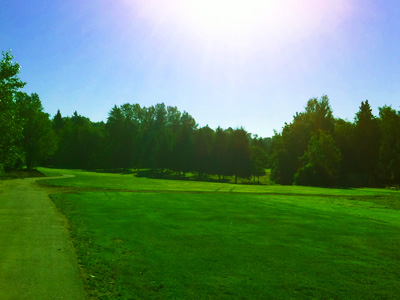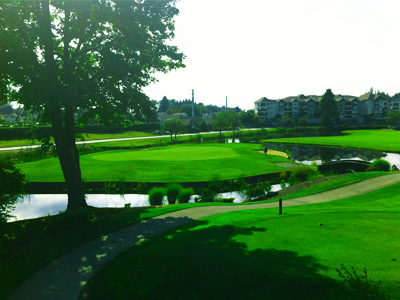From the sounds of the bellyaching in pockets of social media, Brooks Koepka’s name should have an asterisk next to it on the U.S. Open trophy.
You see, Koepka, in their view, didn’t win a real Open. Koepka won something less than an Open — maybe a PGA Championship or something like that — because he tied Rory McIlroy’s 72-hole scoring record en-route at Erin Hills en route to his first major title. What’s worse, in their eyes, is that six other guys finished at 10 under par or better, more than triple the total number of players to finish at that mark in the prior 116 U.S. Opens.
This Open was too easy, they say.
I say this Open was great, and, too, was Erin Hills as host.
Of course, if you’re a traditionalist who wants the one-week-only pain and suffering of a U.S. Open, you hated this week. Too many birdies and eagles. Too many players under par. Medinah No. 3 in Illinois laid down in 1990 like Erin Hills did this time around, and it’s only hosted PGA Championships and Ryder Cups since. You’re probably wishing the same on Erin Hills.
Most of golf knew going into this week that this course could yield a lot of red numbers if the wind didn’t blow (it didn’t except for portions of Sunday) and it rained (which it did, in spades). The wide fairways aren’t hard to hit by design, influenced by the Augusta National design so lauded for playing as a second-shot golf course. However, the purists want second-shot, friendly courses reserved for two other majors. They want the U.S. Open to be an every-shot golf course, inducing claustrophobia with tiny fairways, unfair bounces and deep, penal rough to play into rock-hard, lightning-fast greens. The 2-foot-deep fescue was too far offline to play a starring role this week, and the weather left Erin Hills practically defenseless.
However, what happened at Erin Hills isn’t an isolated barrage of scoring. The U.S. Open has lacked bite in six of the last nine years, including four in a row.
- Ricky Barnes got to 10 under at Bethpage Black in 2009, which looked as muddy as Woodstock did in ’69.
- Rory McIlroy made a mockery of Congressional in 2011 thanks to a one-two punch of heat and rain on weak, renovated greens.
- Martin Kaymer smoked Pinehurst No. 2 in the first two rounds in 2014, forcing the USGA to juice up weekend pins as the German coasted to a second major.
- A lack of rain devastated first-time (and maybe only-time) host Chambers Bay to the point that some putting surfaces were missing grass — and 5-under total still won on the then-longest US Open course.
- Oakmont caught deluges of rain last year and couldn’t show all of its teeth as we’ve come to expect.
So, tell me more about how Erin Hills was too easy. With modern, impeccably made technology and pro golf talent pools deeper than ever, it’s practically impossible to deter scoring with rain and without wind.
The counter from the purists is that the USGA has traditionally thwarted scoring and administered pain by tightening fairways to nearly microscopic widths, surrounding targets with juicy rough and ginning up green speeds. The USGA also does that by artificially setting par, typically at 70, by reducing common par 5s into monstrous par 4s and by adding length that no one would use but for an Open. Case in point? No. 15 at Erin Hills played on Saturday as a 278-yard par 4. Fun! Oakmont’s eighth hole was a nearly 300-yard par 3. Boo? One’s easy; one’s tough.
If there are any hurt feelings from how mean the U.S. Open field was to par this week, then try this mental trick: Imagine it as a par-70 instead of a par-72. Imagine No. 1 as a par 4 and No. 15 as a par 3. All of a sudden, the winning score is 8 under and just eight players beat par. Voila!
Erin Hills didn’t need beat-you-over-the-head features to make players think, though it lacked the features that viewers have traditionally come to anticipate as a Drudge siren for difficulty. Wide fairways meant choices, and choices, as Pete Dye often attests, are what really gets the best players into a bind. The ego is a funny thing. When we have no choice, the task becomes more focused and a little easier. Sure, hitting a 22-yard-wide fairway at your daddy’s Open is harder than hitting a 60-yard-wide fairway at Erin Hills. But a guy like Brooks Koepka, who hit a 379-yard 3-wood downhill and downwind on No. 18 on Sunday, still has an edge either way because he knows, just as short-knocker Jim Furyk does, that if they both miss the fairway off the tee, Koepka has an even bigger edge from the rough.
Even if you didn’t like Erin Hills, we can agree on one thing: Length clearly is not a deterrent. Brian Harman is a perfectly average driver of the ball on the PGA Tour, and he finished T-2. Bill Haas isn’t long, and he finished T-5. There’s actually scoring data from the PGA Tour to suggest that, at a certain length, making par 5s longer improves overall scoring regardless of a player’s average driving distance.
Brandel Chamblee said on Golf Channel he thinks the Open and other major courses need to go to 8,000-yard lengths to stymie players. First, there aren’t many of those. Second, what difference is 165 yards going to do compared to what Erin Hills offered? The problem with length is that it makes it harder to draw up true hazards that aren’t vast seas of sand or water features running the full length of holes. The more north-south space a golf hole has, the more difficult it is to reasonably frame it with obstacles.
If anything, Erin Hills proved that the only things that can be done to bring the field back to par are the classic USGA manipulations. If there’s a clamoring for that, we’ll see how they do in defending par in the coming years, as the U.S. Open moves through a run of classic venues: Shinnecock Hills, Pebble Beach and Winged Foot. By then, the whining about Erin Hills will end, but the onslaught against par will not.
Ryan Ballengee is a Yahoo Sports contributor. Find him on Facebook and Twitter.
Devil Ball Golf – Golf – Yahoo Sports
Other Related Posts:
It's tournament time! We continue the season at historic Riviera Country Cl...
When the TV cameras approached him on the way to the practice range, Bill ...
Rory McIlroy doesn't usually have to deal with this stuff. Normally when he...
Davis Love III named Tiger Woods, Jim Furyk and Steve Stricker as 2016 U.S...
If this is the result when arguably the world's best golfer steps ...
















